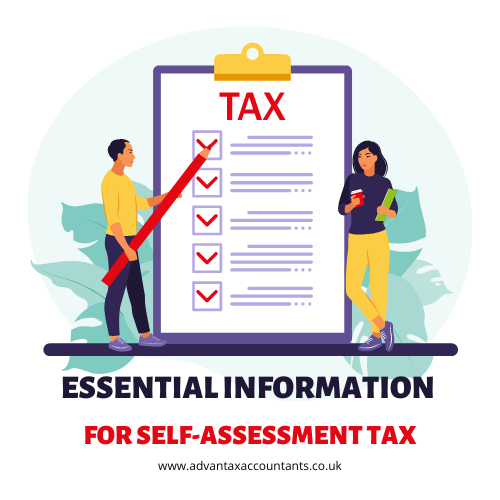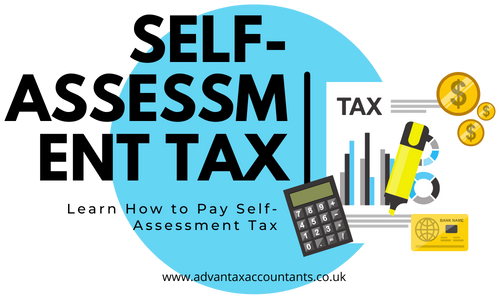Introduction
If you are self-employed and have multiple sources of income, you need to learn to pay a self-assessment tax return annually. The self-assessment tells HMRC about your financial situation, how much money you have earned this year, and other financial circumstances so that HMRC can calculate the payable amount of tax. This method is also called “filing an annual tax return,” and you can easily fill it out online. The name “self-assessment” never indicates that you must pay self-assessment tax yourself. You can hire a professional tax accountant or an accounting firm to do it for you.
When you are employed by a company or an organization, the income tax is automatically deducted from your salary by HMRC. Around 85% of income tax is being collected this way.
When you are self-employed or a landlord, earning money through rent and investment, tax is not automatically deducted from your income. This is where self-assessment is used. Self-assessment is a way to tell the UK government about your income so it can be taxed appropriately. It’s a person’s responsibility to inform the UK government about his earnings so that he can be taxed.
After filling out the self-assessment tax return, HMRC will guide the business to pay the self-assessment tax by calculating the amount of tax. HMRC will send you a notice to pay your self-assessment tax returns. You can pay the self-assessment tax online with a debit card, credit card, or post by using the check. Let’s have a look at these methods in detail:
Methods to Pay Self-Assessment Tax
Through Credit or Debit Card
If you are native to the UK and have a bank account in any UK base bank, you can pay self-assessment tax fees online by using “Bill pay” services from Standard Corporation banking. If you prefer to pay the self-assessment tax with a credit card, a 1.4% nonrefundable fee will be charged. Bill-pay takes three working days to deliver your fee to HMRC.
Phone Banking
Today, when the world is modernizing, and new ways of online payment are evolving. It makes things easy for businesses to make online payments to save time and focus on their business. For phone banking, call your bank and give details of your HMRC account, self-assessment tax, and charges to be paid. Before making a payment once, call your bank company to ensure the service’s availability, daily value limit, and the latest payment terms.
Fast Payment
The banking sector introduced this service to facilitate consumers sending payments on the same day or the next day via the internet or by telephone; the payment value never exceeds the limit issued by the banks.
CHAPS
In the fast-moving world of business, your company needs to be able to make fast, efficient, and high-value payments. CHAPS provides the facility for businesses or individuals to make same-day payments through electronics and bank-to-bank technology. CHAPS payments can be more expensive than other payments but can be helpful if you have to make a large transition.
Make a Payment at the Post Office
You are open pay self-assessment tax at the post office using checks, cash, or debit cards. On the other hand, HMRC treats each payment equally, but on December 15th, 2017, the government will no longer be permitted to pay your self-assessment tax through the post office, but the other services are still under use.
Utilization of Online Banking
Self-assessment bills can be paid directly using online or mobile bank accounts. When ready to pay, start your self-assessment payment, and select the pay by bank account option. You will be directed to sign in to your mobile banking account to approve the self-assessment payment. Usually, this payment never takes much time, but sometimes it takes 2 hours to show up in your account.
Essential Information to Understand Self-Assessment Tax
What is the Tax Reference Number?
When you register for tax as a sole trader, trust, partnership, or company, a tax registration number is issued by the revenue. A taxpayer must use the self-assessment number when paying for the self-assessment. It is also known as UTR. UTR stands for unique transaction reference number. This reference code is printed on the payment slip sent to you by HMRC and in the reference box. The reference number for paying the tax consist of ten digital followed by the letter “k,” for instance, 0123456789K.
What If You Don’t Have Proof of Payslip?
If you are willing to pay self-assessment tax electronically, you do not need a pay slip unless you are not paying physically at a bank or post office. HMRC prefers to make payments electronically using one of the methods described above. Electronic payments are considered more efficient, time-saving, and secure if you provide HMRC with an accurate reference number.
Suppose you are paying your self-assessment tax by post and do not have access to the electronic payment receipt sent by HMRC. You can print a self-assessment receipt and send it to HMRC with payment.
Deadlines for the Tax Payment
Although the tax return deadline is January 31st, the payment is divided into two parts.
The deadline for the payment of the self-assessment tax is October 31st if you send it on paper (by post). On the other hand January 31st of the following year, if you send your tax return to HMRC using the online method.
What Is Payment On Account?
“Payment on account” is a tax payment made by taxpayers who undergo a six-month self-assessment plan to split the tax burden for the following year. The self-assessment tax is calculated based on the previous year. It means that HMRC never asks you to submit your assets every time. HMRC predicts your future earnings based on your previous earnings. It can be paid in two instalments. The deadline for instalments is January 31st and July 31st of the following year.
What If You Have Never Completed A Self-Assessment Tax Return Before?
Suppose you have not received any tax return notification from HMRC, but you had other sources of income. In that case, you can notify HMRC by October 5th, following the end of the tax return year in which you had the income, or you may face a penalty. Once you enrol yourself for self-assessment tax, HMRC will send you a tax return form to complete it.
What Is a Short Tax Return?
The short tax return contains four pages of the form, which aims to use easy language than the self-assessment return; few questions are asked in the short tax return form. This facility is not available for everyone; a limited number of people can benefit from it.
There are some limitations on the use of short tax return forms.
- This form is not issued to people who filed their previous returns late.
- Another must not use a short tax return form issued to one person.
What Information Do I Need to Complete the Self-Assessment Form?
Here is some information that is essential to completing the self-assessment form.
- Your 10-digit tax number (UTR)
- Your social security number
- Information on tax-free income for the financial year
- P60 or some other documents which certify how much income you have received for this year and on which you have already paid taxes
- Any contribution to a charity that qualifies for tax relief
Who Needs To Submit a Self-Assessment Tax?
Suppose you are working on a salary paid through the payment system or earning only retirement income. You do not need to pay any tax return as a starting point because your income tax has already been deducted before sending it into your account.
Here are some examples of whom individuals need to pay this tax
- Individuals
- People with have more than one source of income
- Individuals who are receiving an income while continuing their work
- Shares holder and managing directors of public companies
- Ministers of Religion
How Long Do You Need To Keep the Financial Record?
Individuals are bounded to retain their financial records for a specific period. When HMRC is supposed to examine your tax return, you may be asked to look at some of your papers. You are open to keeping your document on paper or digitally. If your records are incomplete or inaccurate, HMRC can take strict action against you, and you can be fined as a penalty.
However, the normal rule for self-employed people and renters is to retain employment records for at least five years after January 31st. For instance, if you are submitting your 2022 tax return, you must keep it until January 2027.
Can Someone Help Me Fill Out My Tax Return?
Self-assessment is easy if your financial matters are simple, and you know what you are doing and from which sources you are getting money. However, this process can take some time; you may be paying tax more than necessary if you are not assured about the benefits and costs you can claim. It is considered a good decision to hire an accountant for your taxes. The cost of hiring an accountant can be more than the actual tax deduction.
What Software Should I Use To File My Tax Return
There are several options available on the market. But we cannot mention every source here in this article. In this article, we will discuss some key points you can use while deciding which software to use.
- Use an HMRC-recognized software
- Use a secure software
- Use such software which is convenient to use
How Do You Register For a Tax Return
It is very simple to register yourself for self-assessment tax. It would help if you did go into the HMRC website and create your account to register yourself. There are few questions will be asked to create an account, including:
- Your contact detail
- Your national insurance number
Once you have created your account, you will receive a unique taxpayer reference number within ten days if you are living in the same country; otherwise, it will take 21 days if you live abroad. After all the processes, you will receive an activation code for your account, and your account is ready for work.
How to Fill In a Self-Assessment Tax Return
If you are willing to fill out your self-assessment form online. You must need to log in with your verified or government gateway account. It’s mandatory to fill out the form section by section, and this is usually straightforward and provides you with all the essential figures from the past tax years.
These documents must have while filling your form
- Your p60 (a p60 form is a certificate for employees’ annual pay and deductions) and p45 (it shows how much tax you have paid from your salary so far)
- Your p11D ( It is a document used by the employer to list all expenses and benefits given to directors and employees)
- Record all other income sources (earning, rent), etc.



